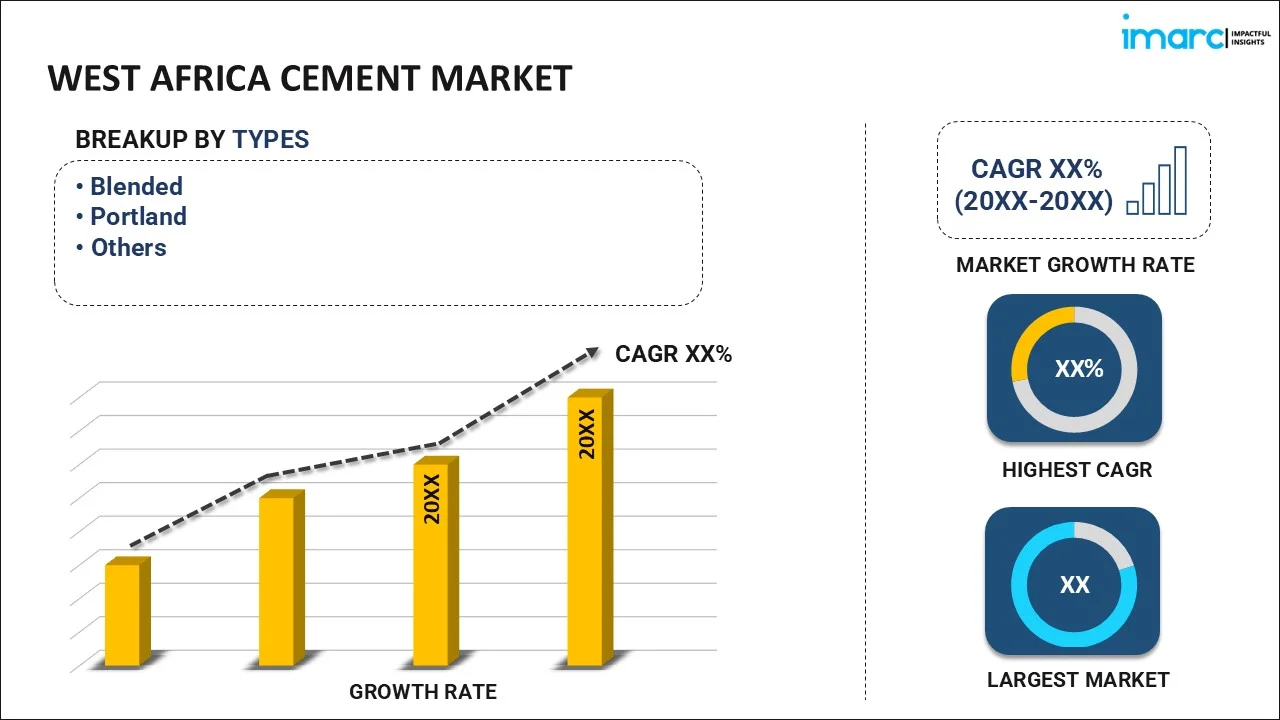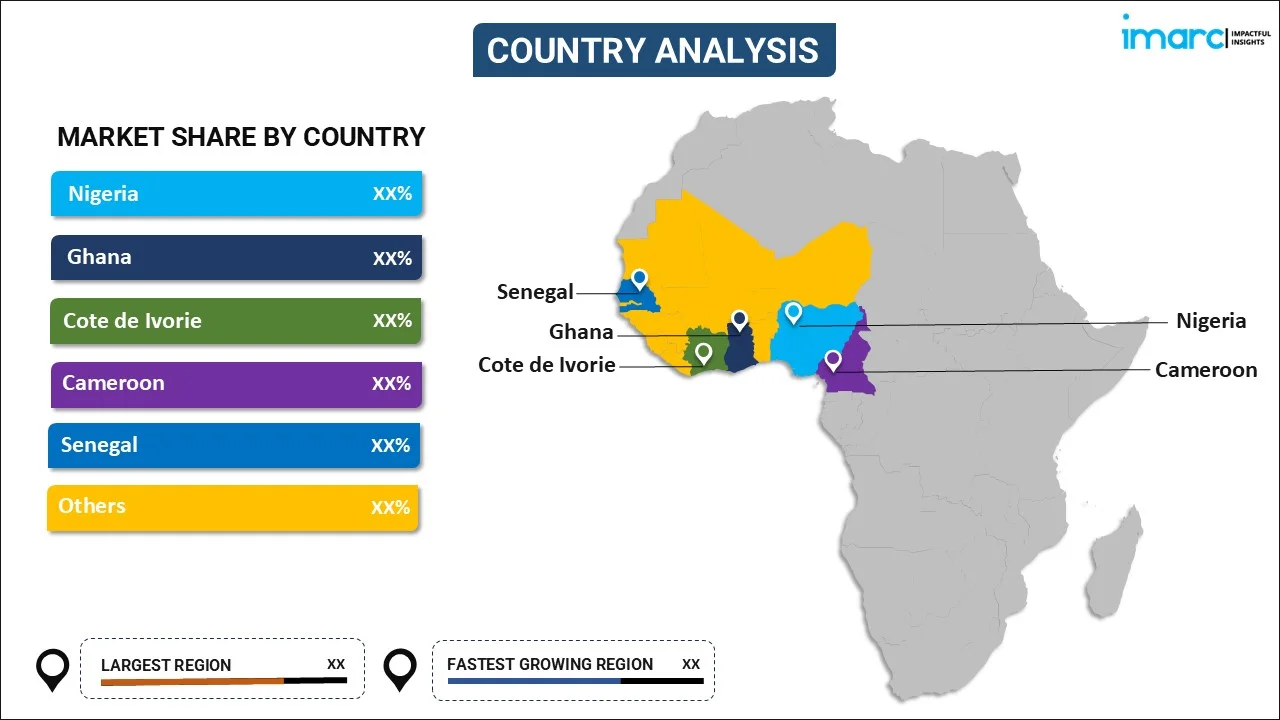
West Africa Cement Market Report by Type (Blended, Portland, and Others), End Use (Residential, Commercial, Infrastructure), and Country 2025-2033
Market Overview:
The West Africa cement market size reached 49.2 Million Tons in 2024. Looking forward, IMARC Group expects the market to reach 84.5 Million Tons by 2033, exhibiting a growth rate (CAGR) of 5.88% during 2025-2033.
|
Report Attribute
|
Key Statistics
|
|---|---|
|
Base Year
|
2024
|
|
Forecast Years
|
2025-2033
|
|
Historical Years
|
2019-2024
|
|
Market Size in 2024
|
49.2 Million Tons |
|
Market Forecast in 2033
|
84.5 Million Tons |
| Market Growth Rate 2025-2033 | 5.88% |
Cement, or Portland cement, refers to a construction material obtained by combining various finely ground minerals that appear rock-like when mixed with water, sand, or grave. It is extensively used as a critical building material in the mass construction of civil works, dwellings and industrial estates. Cement manufacturing is an energy-intensive process, which makes it uneconomical if transported over long distances. In West Africa, the cement industry is witnessing positive growth on account of various favorable initiatives undertaken by governments and rising investments by new market entrants.
The West Africa cement market is primarily driven by the continuously rising population, resulting in the increasing demand for shelter, infrastructure and services. Along with this, there have been several construction projects in the pipeline, including housing, railways, roads, metro systems, ports, and water and energy projects across the region. Besides this, the One Belt One Road (OBOR) and other foreign-funded projects are also expected to increase the demand for cement across the region. Moreover, the governments are rapidly investing in road development by introducing West Africa Road Infrastructure and Investment Forum 2021 (#WARIIF21). This will bring the key financiers, investors, multilateral investment institutions, government ministries, regulators, public and private sector stakeholders to fund and execute infrastructure projects, thereby providing a positive outlook for the market. Other factors such as rapid urbanization and industrialization, and technological advancements in the process of cement production are further bolstering the market growth.
Key Market Segmentation:
IMARC Group provides an analysis of the key trends in each sub-segment of the West Africa cement market report, along with forecasts at the regional and country level from 2025-2033. Our report has categorized the market based on type and end use.
Breakup by Type:

- Blended
- Portland
- Others
Breakup by End Use:
- Residential
- Commercial
- Infrastructure
Breakup by Country:

- Nigeria
- Ghana
- Cote de Ivorie
- Cameroon
- Senegal
- Others
Competitive Landscape:
The competitive landscape of the industry has also been examined along with the profiles of the key players.
Report Coverage:
| Report Features | Details |
|---|---|
| Base Year of the Analysis | 2024 |
| Historical Period | 2019-2024 |
| Forecast Period | 2025-2033 |
| Units | Million Tons |
| Segment Coverage | Type, End Use, Country |
| Countries Covered | Nigeria, Ghana, Cote de Ivorie, Cameroon, Senegal, Others |
| Customization Scope | 10% Free Customization |
| Post-Sale Analyst Support | 10-12 Weeks |
| Delivery Format | PDF and Excel through Email (We can also provide the editable version of the report in PPT/Word format on special request) |
Key Questions Answered in This Report:
- How has the West Africa cement market performed so far and how will it perform in the coming years?
- What has been the impact of COVID-19 on the West Africa cement market?
- What are the key regional markets?
- What is the breakup of the market based on the type?
- What is the breakup of the market based on the end use?
- What are the various stages in the value chain of the industry?
- What are the key driving factors and challenges in the industry?
- What is the structure of the West Africa cement market and who are the key players?
- What is the degree of competition in the industry?
Need more help?
- Speak to our experienced analysts for insights on the current market scenarios.
- Include additional segments and countries to customize the report as per your requirement.
- Gain an unparalleled competitive advantage in your domain by understanding how to utilize the report and positively impacting your operations and revenue.
- For further assistance, please connect with our analysts.
 Request Customization
Request Customization
 Speak to an Analyst
Speak to an Analyst
 Request Brochure
Request Brochure
 Inquire Before Buying
Inquire Before Buying




.webp)




.webp)












